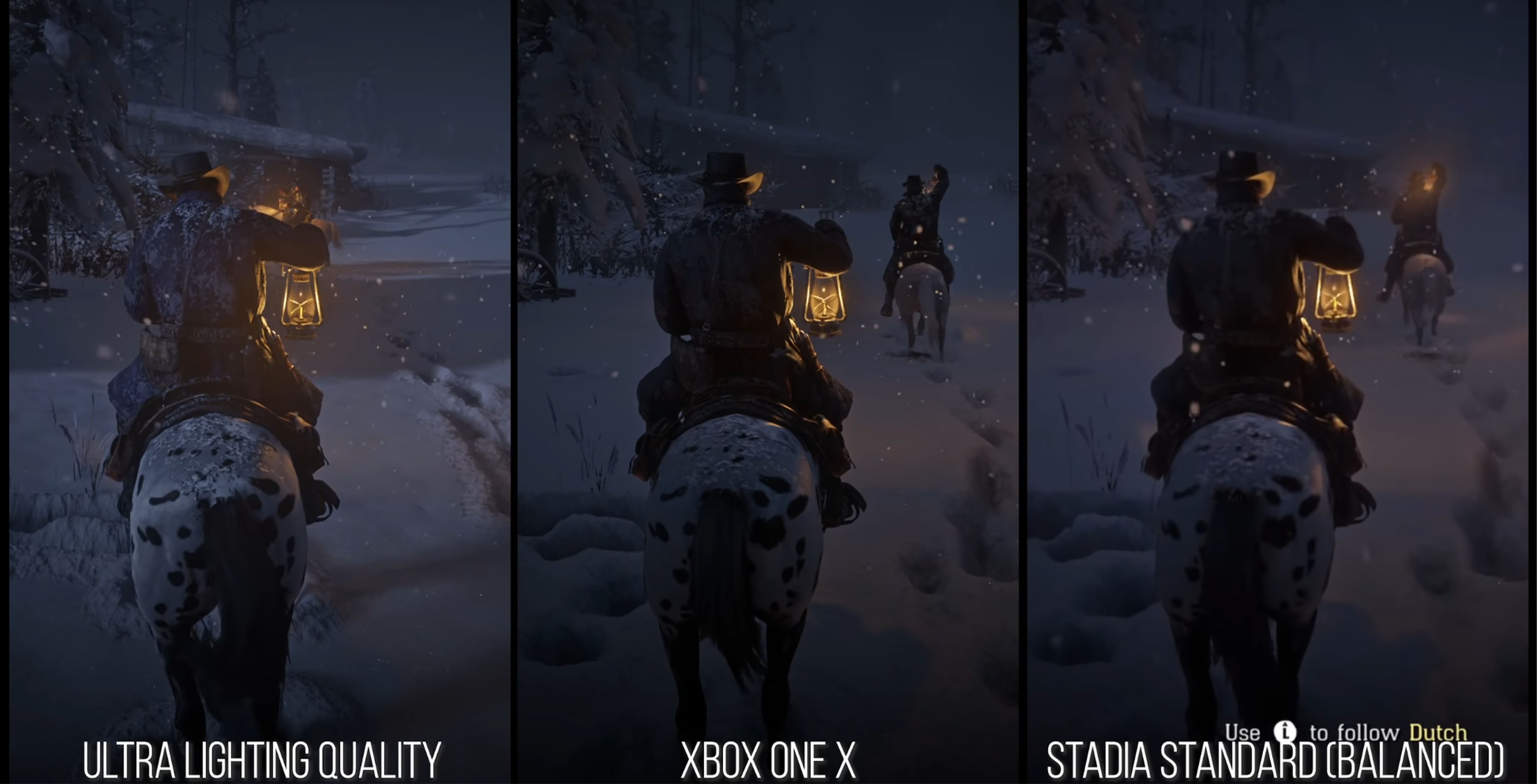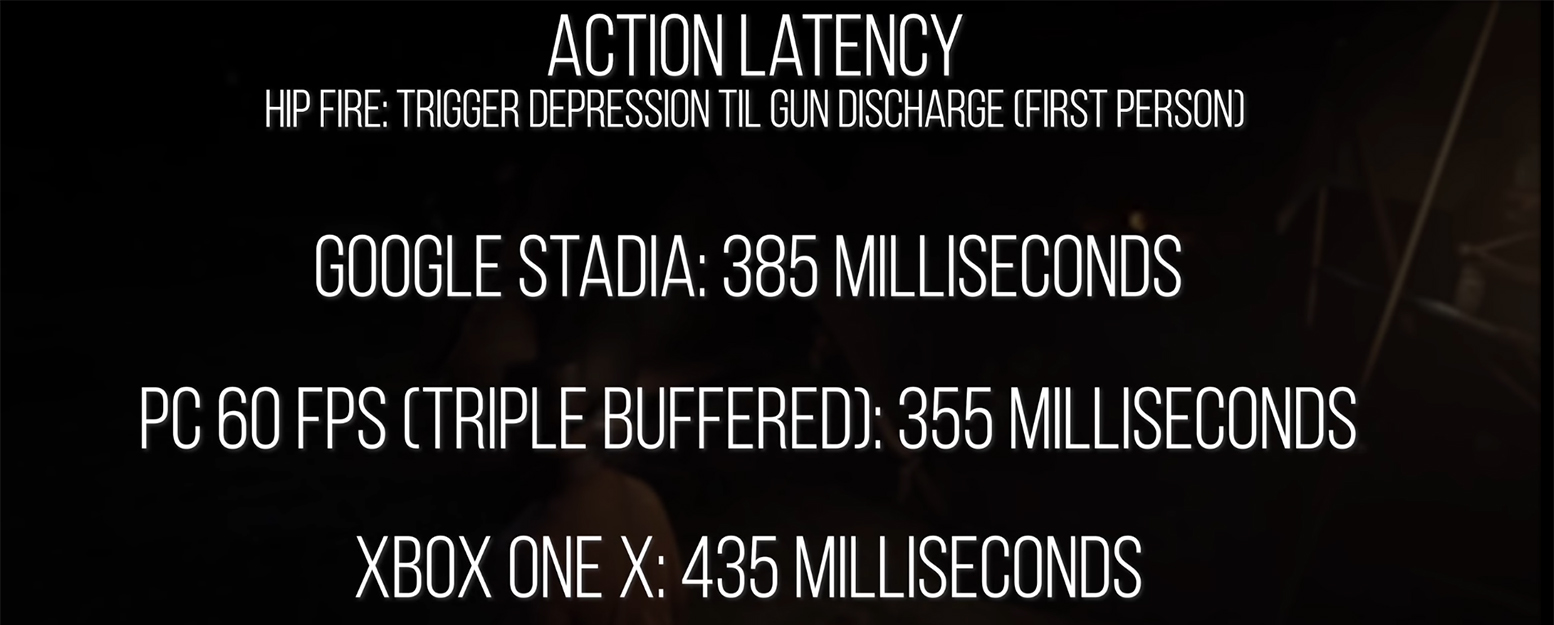
Questions still swirl around Google’s cloud gaming platform, Stadia, but now that it’s out, users can get some answers.
Thanks to Digital Foundry’s excellent YouTube channel, which provides in-depth analysis of the technical aspects of games and compares resolution, framerate and other features across consoles and PC, we can see how Stadia really stacks up.
Digital Foundry’s latest video compares Stadia’s rendition of Rockstar’s Red Dead Redemption 2 to Xbox One and PC with interesting results.
However, before we dig in, it’s worth noting that Stadia depends entirely on your internet connection, as well as proximity to Google’s data centers. In other words, there are several factors that can severely affect how Stadia performs for different people, which can make testing difficult.
Ultimately, Digital Foundry does an excellent job given the circumstances, but don’t take the latency and responsiveness tests as the final say on Stadia’s performance. Those numbers may change depending on your location and internet connection.
Stadia graphics similar to Xbox One X, video compression an issue
With that said, let’s dig into it. First up, Digital Foundry tested the free tier of Stadia, which streamed Red Dead at 1080p/60fps in the web browser. However, due to the tester’s internet situation, he couldn’t test it at 4K. Instead, he had another person test Stadia Pro at 4K, but it actually ran Red Dead at 1440p resolution with a lower 30fps framerate.
It’s not clear why Stadia Pro didn’t run at 4K or why it used a lower framerate. However, the video does analyze the stability of the Stadia and Pro framerates. Free Stadia wasn’t able to maintain a solid 60fps and often dropped a few frames. Digital Foundry described it as similar to running a game on PC with settings slightly higher than what the hardware can handle.
Stadia Pro, however, was rock solid at 30fps and hardly ever lost frames in the test.
Graphically, Digital Foundry says Stadia matches up closely with the Xbox One X settings which, in most cases, works out to about Medium or High settings on PC. The video goes through a detailed analysis of specific graphics settings like lighting and texture and shows just how they stack up to each other.
The biggest issue with Stadia’s visuals is video compression. It generally makes the game look less sharp and detailed. However, it’s particularly bad in night or dark scenes, where the compression causes banding and other artifacts.
Stadia input latency roughly two frames per second slower than PC

Finally, Digital Foundry analyzed input latency and the results were quite surprising. PC running Red Dead at triple-buffered 4K/60fps had input latency of 355 milliseconds (ms). Xbox One X, however, had latency of 435ms. Google Stadia at 1080p/60fps impressed with latency of 385ms, coming very close to PC in terms of responsiveness. According to Digital Foundry, Stadia works out to about two frames per second slower response than PC.
Impressively, Digital Foundry says that extra time with Stadia is basically processing time combined with latency to Google’s data centers. Digital Foundry measured its latency to the nearest data center at 25ms, meaning another 5ms of processing time to make up the total 30ms difference between PC and Stadia. Obviously, that latency can change depending on your connection and proximity to a Google data center.
Overall, the analysis by Digital Foundry reveals some interesting information about Stadia and its performance. The video is well worth the watch, especially if you’re interested in the technical details. Stadia’s Red Dead performance was better than I expected, but compared to what’s available, I’m not sold on Google’s cloud gaming platform yet. However, those who care less about visual fidelity may find that Stadia does exactly what they need.
Google says developers have freedom to set performance
Update 11/25/2019: Following the results of the Digital Foundry test, many users accused Google of breaking its Stadia promises. Specifically, the company’s vice president, Phil Harrison, promised that all games would support 4K at launch “with appropriate TV and bandwidth.” Harrison also noted that, for artistic reasons, some games would run at 4K/30fps “so Stadia always streams at 4K/60 via 2x encode.”
However, Digital Foundry revealed that that wasn’t the case with Red Dead Redemption 2, which streamed at 1440p. Further, Destiny 2 also reportedly streams at 1440p instead of 4K. However, in a statement to Eurogamer, Google said it gives developers the freedom to set the performance of Stadia ports, but that it expects performance to improve over time. Here’s the full statement below:
“Stadia streams at 4K and 60 FPS – and that includes all aspects of our graphics pipeline from game to screen: GPU, encoder and Chromecast Ultra all outputting at 4k to 4k TVs, with the appropriate internet connection. Developers making Stadia games work hard to deliver the best streaming experience for every game. Like you see on all platforms, this includes a variety of techniques to achieve the best overall quality. We give developers the freedom of how to achieve the best image quality and framerate on Stadia and we are impressed with what they have been able to achieve for day one.
“We expect that many developers can, and in most cases will, continue to improve their games on Stadia. And because Stadia lives in our data centers, developers are able to innovate quickly while delivering even better experiences directly to you without the need for game patches or downloads.”
In other words, it seems that while Stadia can run games at 4K/60fps, developers need to enable that in the ports they build. Hopefully, developers work quickly to enable this. For now, however, it reflects poorly on Google. It seems the search giant couldn’t deliver on its promise.
Source: Digital Foundry Via: Android Police
MobileSyrup may earn a commission from purchases made via our links, which helps fund the journalism we provide free on our website. These links do not influence our editorial content. Support us here.


